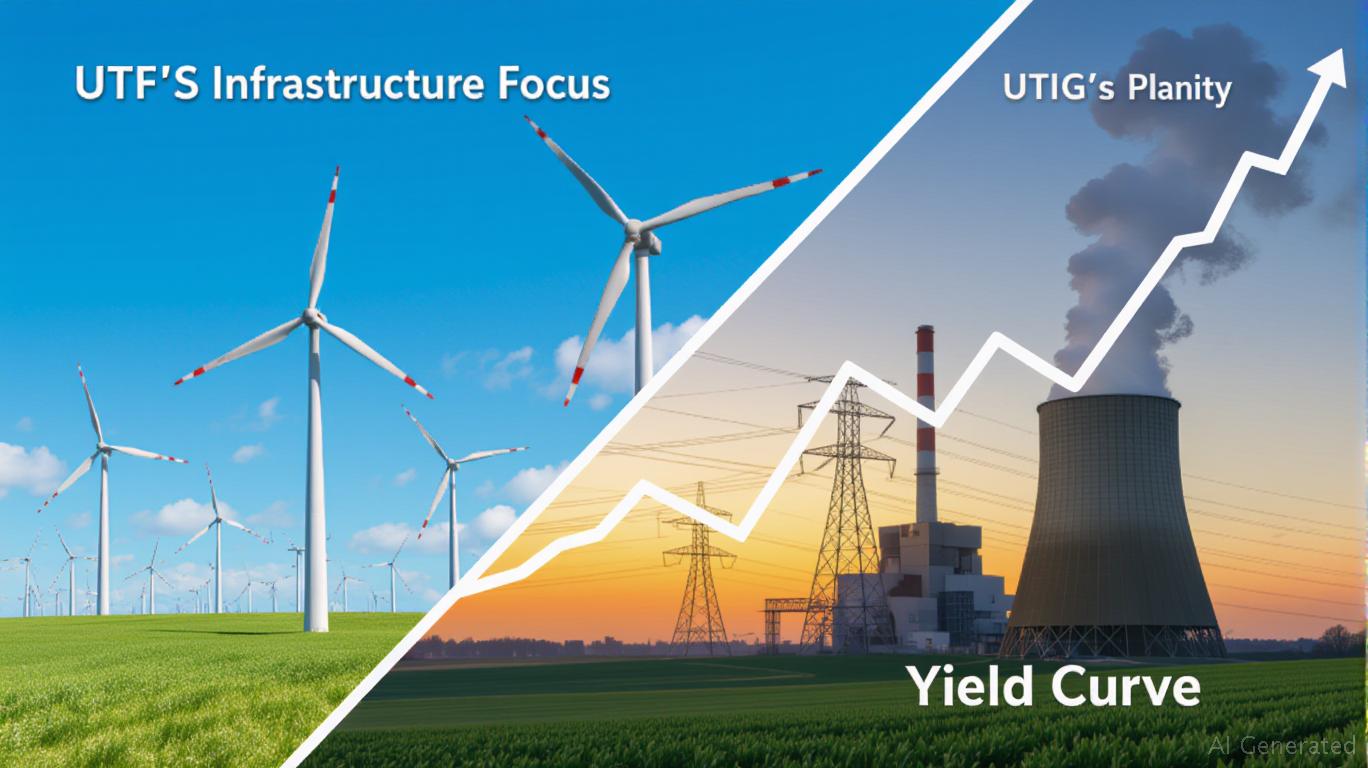UTF vs. UTG: Navigating Utility and Infrastructure Dividends in a Volatile Rate Environment
The quest for steady income in a market buffeted by shifting interest rates has investors scrutinizing dividend-paying funds like the Cohen & Steers Infrastructure Fund (UTF) and the Reaves Utility Income Trust (UTG). Both offer monthly payouts, but their risk profiles and sector exposures diverge sharply. For income seekers, the choice hinges on whether to prioritize stability or gamble on short-term gains. Here's how to navigate this divide.

Risk-Adjusted Performance: UTF's Edge in Downside Protection
UTF's risk metrics tell a compelling story. Over the past decade, it delivered an annualized return of 11.13% versus UTG's 2.12%, but its true advantage lies in risk management. Its Sortino Ratio of 2.37 versus UTG's 1.97 means UTF generates more return per unit of downside risk—a critical trait in volatile markets. UTF's Calmar Ratio of 2.48 also crushes UTG's 0.99, reflecting its ability to rebound from drawdowns. Even UTF's volatility of 2.52% is far lower than UTG's 3.74%, making it a smoother ride for portfolios.
UTG's allure is its higher Sharpe Ratio (1.68 vs. UTF's 1.46), which rewards its slightly better risk-adjusted short-term returns. Yet this masks deeper risks: its current drawdown of -10.46% versus UTF's minimal -0.18% underscores its sensitivity to market swings. Investors chasing UTG's recent 1-month outperformance (4.65% vs. UTF's 3.66%) must weigh whether the 30% higher volatility is worth the reward.
Yield Curve Dynamics: UTF's Infrastructure Resilience
The yield curve's shape—currently inverted and signaling recession risks—favors UTF's diversified infrastructure exposure over UTG's utility-heavy focus. Utilities (74% of UTG's portfolio) typically struggle when rates rise, as higher borrowing costs pressure profit margins. UTF's 40.8% in utilities is balanced by allocations to energy (14.6%) and industrials (14.1%), sectors that could benefit from infrastructure spending even in a slowdown.
UTF's par NAV stability (unlike UTG's current discount) adds to its appeal. If rates fall—a plausible scenario if the Fed pivots—UTF's 5.91% average coupon and 28.3% leverage could amplify returns without overextending. UTG's 19.8% leverage, while safer, leaves less room to capitalize on rate cuts.
Income Generation: UTF's Margin of Safety
Income seekers get 6.88% from UTF versus UTG's 6.34%, but UTF's lower volatility creates a margin of safety. UTG's payout relies heavily on utilities' regulated earnings, which face regulatory and demand headwinds. UTF's broader infrastructure basket—from toll roads to renewable energy—buffers it against sector-specific shocks.
Investment Thesis
Buy UTF for sustainable income in a volatile rate environment. Its superior risk-adjusted metrics, par NAV, and diversified infrastructure holdings position it to thrive whether rates rise or fall. UTG's momentum plays (e.g., energy allocations) may shine in a sharp recovery, but its -10.46% drawdown and utility-heavy exposure make it a riskier bet in prolonged uncertainty.
For conservative portfolios, UTF's Sortino advantage and 6.88% yield offer a rare combination of income and stability. Aggressive investors might layer in UTG for short-term gains but should cap allocations at 5-10% of a portfolio to avoid excessive volatility drag.
In a world where rate cycles are unpredictable, UTF's long-term consistency—not just its dividends but its resilience in stress—makes it the smarter core holding.

Comments
No comments yet